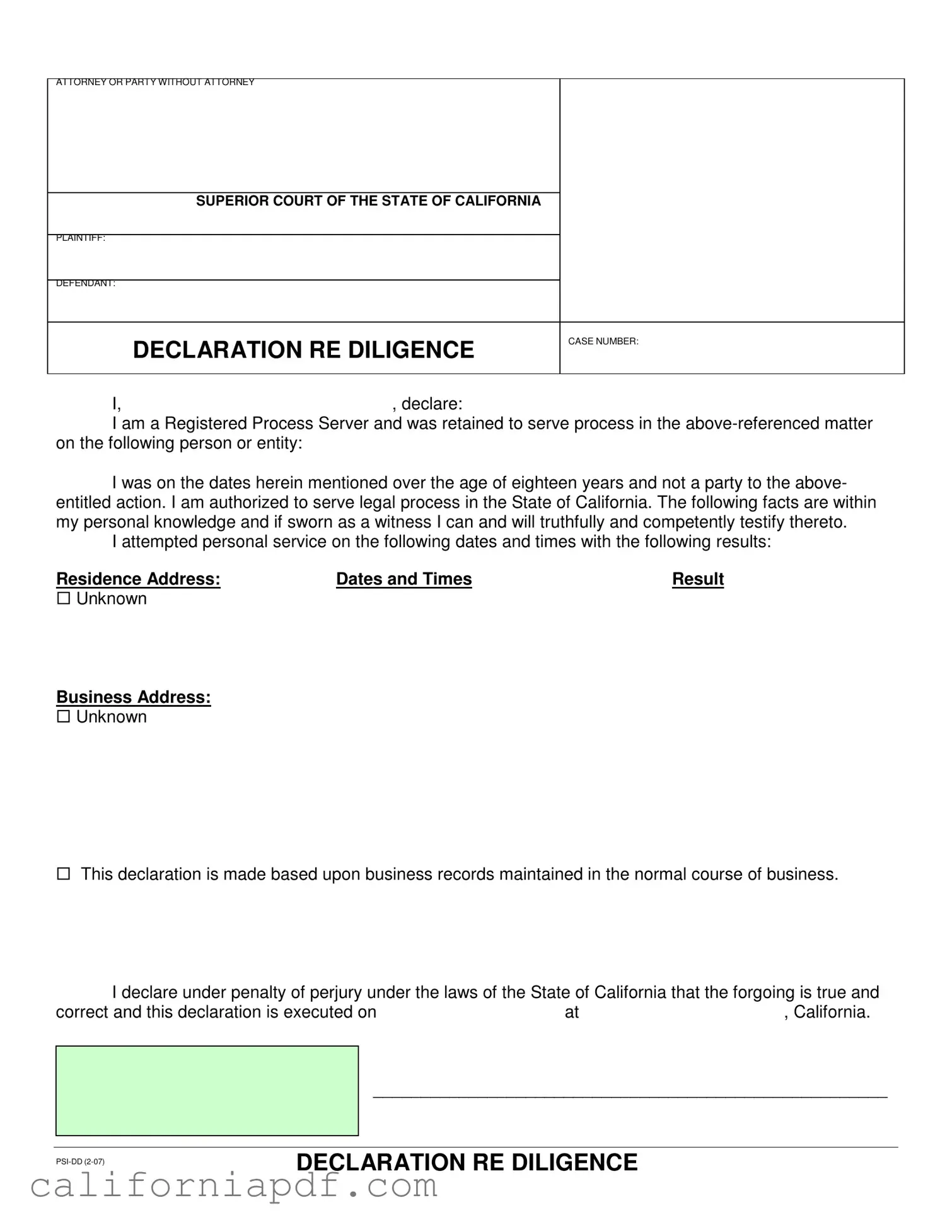The Affidavit of Service is one document that shares similarities with the California Declaration of Diligence. Both documents serve as a formal declaration by a process server, detailing efforts made to serve legal documents. The Affidavit of Service, like the Declaration of Diligence, often outlines the time, date, and result of attempted service, providing a key piece of evidence in court proceedings to verify that attempts have been made to notify the involved parties.
Proof of Service forms bear a resemblance to the California Declaration of Diligence as well. These forms are used to demonstrate that a legal document has been delivered to the relevant party or parties in a manner prescribed by law. Like the Declaration of Diligence, a Proof of Service shows diligent effort has been made to follow legal procedures, ensuring all parties are properly informed and legal standards are upheld.
The Declaration of Attempted Service also parallels the Declaration of Diligence in its function and purpose. It details the efforts a server made to deliver legal documents when direct service was not possible. This declaration includes specific attempts to serve, mirroring the diligence form by highlighting the process server's endeavors to fulfill their obligations under challenging circumstances.
The Notice of Litigation is another document resembling the Declaration of Diligence, as it formally notifies involved parties about ongoing or impending legal action. While it primarily serves as a notification, the process of issuing this notice often requires documenting efforts to reach the party, similar to the diligence needed in attempting service as outlined in the California form.
Non-Est Factum declarations share a connection with the Declaration of Diligence due to their nature of presenting formal statements or declarations relevant to a case. These documents typically declare a misunderstanding or an inability to understand the nature of a legal document being signed, requiring a sworn statement to that effect. The emphasis on sworn, factual assertions makes it alike the diligence declaration.
The Motion to Quash Service of Process is linked to the Declaration of Diligence through its involvement in the process serving arena. This motion might be filed if service was attempted but not completed according to legal standards. An understanding and documentation of diligence attempts are often crucial in these proceedings, emphasizing the attempts' adequacy or inadequacy.
Subpoena responses also correlate with the Declaration of Diligence. When individuals respond to a subpoena, they might need to outline the efforts made to comply with the subpoena, including any attempts to retrieve and provide the requested information. This detailed recording of efforts parallels the diligence shown by process servers in adhering to legal service requirements.
Lastly, the Return of Service document closely aligns with the California Declaration of Diligence. It serves as the official confirmation that a document was delivered, including detailed accounts similar to those in a Declaration of Diligence. Both documents ensure that the court and relevant parties are informed about the status of document delivery, marking an integral step in the legal process by validating the efforts to serve or notify as required by law.

